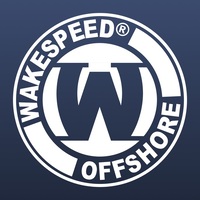Why ‘Continuous’ Ratings Can Prevent Fires and Equipment Failures
In power systems, ignoring continuous ratings isn't just a minor oversight—it's risking safety, efficiency, and longevity. Installers and buyers often focus on impressive peak specifications, neglecting the realities of continuous operation. The hidden danger? Fires, premature failures, and costly repairs.
Inverters: The Real Truth Behind Peak vs. Continuous Ratings
Manufacturers often highlight peak power ratings like "8kW for 1 second," but real-world reliability depends on continuous performance. For instance, an inverter rated at 5kW may comfortably provide 4.5kW briefly, but operating at this level continuously introduces severe risks:
- Overheating: Operating close to peak capacity drastically shortens lifespan—just a 10°C increase in capacitor temperature can halve component life.
- Efficiency Loss: Most inverters reach peak efficiency around 80% load. Pushing beyond this significantly decreases efficiency, leading to wasted energy and increased heat generation.
- Premature Aging: Constantly stressing components results in early breakdowns and unexpected outages.
The Solution: Select inverters with at least 20% more continuous rating than your maximum expected load. For example, a 5kW inverter should run at ≤4kW continuous load for maximum reliability and safety.
| Expected Continuous Load | Recommended Inverter Rating |
|---|---|
| 2.4kW | ≥3kW Inverter |
| 4kW | ≥5kW Inverter |
| 8kW | ≥10kW Inverter |
| 16kW | ≥20kW Inverter |
Cables: More than Just Gauge Size
Cable ratings often assume ideal conditions, far from real-world scenarios. A cable rated at 55A at 30°C may drop to only 42A at 50°C—a 24% reduction that many installers overlook. Continuous high-current loads increase cable temperatures dramatically, reaching 90°C (V90 cable) or even 105°C (V105 cable), and higher at termination points. Most devices use ABS plastic, which begins to deform at 105°C, risking shorts, fires, or catastrophic equipment failure.
Voltage drops under continuous loads also lead to nuisance issues like battery monitor calibration errors or slow battery charging, causing customer frustration.
Best Practices: Use appropriately derated cables, quality copper terminals, and robust copper busbars from trusted brands such as Victron, Blue Sea, and Exotronic to reduce resistance, heat, and risk.
Batteries: The Importance of Endurance
Many power systems pair a single 300Ah battery with a 3000W inverter. Although this configuration may appear sufficient, continuous high discharge currents (around 200A) can quickly raise battery terminal temperatures beyond safe limits. Most battery terminals are housed in ABS plastic, which has a glass transition temperature of around 105°C. Once terminals exceed this temperature, the casing begins deforming, significantly increasing the risk of short-circuits and potential fires.
Few batteries address these critical safety points adequately. Batteries like Exotronic's Apex series include MOSFET temperature monitoring and four cell terminal sensors, ensuring safety even at continuous high discharge.
Continuous high currents also severely degrade battery lifespan:
- LiFePO4 battery cycle life halves when operated consistently at 45°C versus the rated 25°C.
- Increased risk of unexpected shutdowns due to Battery Management System (BMS) temperature protections.
- MOSFET degradation, the key component within the BMS.
The Bottom Line
Modern usage trends, such as induction cooktops, high-current charging (like portable power stations), and extended off-grid scenarios, are pushing electrical systems to their limits. These demands often surpass what older systems were designed for, which could pose safety risks. Whether you're a consumer or a professional installer, it’s crucial to consider continuous ratings to ensure your power system remains safe, efficient, and reliable for your needs.





























.png)
.webp)
.webp)
